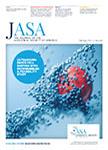版权所有:内蒙古大学图书馆 技术提供:维普资讯• 智图
内蒙古自治区呼和浩特市赛罕区大学西街235号 邮编: 010021

作者机构:Woods Hole Oceanogr. Inst. Woods Hole MA 02543 rstephen@whoi.edu
出 版 物:《The Journal of the Acoustical Society of America》
年 卷 期:1999年第105卷第2_SUPPLEMENT期
页 面:1168-1168页
学科分类:07[理学] 082403[工学-水声工程] 08[工学] 070206[理学-声学] 0824[工学-船舶与海洋工程] 0702[理学-物理学]
摘 要:The first ultra‐low frequency (ULF) (0.001–1 Hz) ambient acoustic noise measurements were made in the 1960s using the Columbia‐Point Arena ocean‐bottom seismic station. Interest in ULF acoustics was spurred in the mid‐1980s by the development of the differential pressure gauge. Also in the mid‐1980s the development of high dynamic range, broadband seismometers revolutionized whole earth seismometry. The Global Seismic Network (GSN) set as its goal the uniform distribution of 128 seismic stations over the surface of the globe, to provide high‐quality data sets for whole earth tomography and other earth scale problems. To accomplish this goal requires about 20 permanent stations on the deep ocean floor. In the future, the acquisition of long time series of ULF acoustic noise in the deep ocean will become much more convenient and the opportunity will be given to exploit these data sets to study oceanographic and earth processes. The sources of ambient noise in this band include infra‐gravity waves, swell interaction at coastlines, currents and turbulence near the seafloor, earthquakes, tsunamis, nonlinear interaction between ocean‐surface waves, and air turbulence. Water column reverberations, Stoneley modes in sediment layers, and the effects of propagation from distant sources also modify the pressure spectra. [Work supported by NSF.]